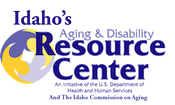Filter your results
Results 11 - 20 of 22. To narrow results enter search keywords or select filters.
Scammers, hackers, and identity thieves are looking to steal your personal information – and your money. But there are steps you can take to protect yourself, like keeping your computer software up-to-date and giving out your personal information only when you have a good reason...
Email provides us a convenient and powerful communications tool. Unfortunately, it also provides scammers and other malicious individuals an easy means for luring potential victims. The scams they attempt run from old-fashioned bait-and-switch operations to phishing schemes using a combination of email and bogus web sites to trick victims into divulging sensitive information. To protect yourself from these scams, you should understand what they are, what they look like, how they work, and what you can do to avoid them.
Phishing is a scam where internet fraudsters send spam or pop-up messages to lure personal and financial information from unsuspecting victims. To avoid getting hooked, visit the link below and view the attached guide.
OnGuardOnline.gov provides practical tips from the federal government and the technology industry to help you be on guard against internet fraud, secure your computer, and protect your personal information.
Protecting your personal information can help reduce your risk of identity theft. There are four main ways to do it: know who you share information with; store and dispose of your personal information securely, especially your Social Security number; ask questions before deciding to share your personal information; and maintain appropriate security on your computers and other electronic devices...
Today’s home network may include a wide range of wireless devices, from computers and phones, to IP Cameras, smart TVs and connected appliances. Taking basic steps to secure your home network will help protect your devices – and your information – from compromise.
A fillable PDF form for a Complaint against a guardian or conservator that may be filed with the court is available here: https://courtselfhelp.idaho.gov/docs/forms/GC_ComplaintForm.pdf.
For other fillable PDF forms related to guardianships or conservatorships, please visit the Court Assistance Office's webpage on Guardianship & Conservatorship: https://courtselfhelp.idaho.gov/Forms/Guardianship.
The internet offers access to a world of products and services, entertainment and information. At the same time, it creates opportunities for scammers, hackers, and identity thieves. Learn how to protect your computer, your information, and your online files...
If you need help with an SSI or SSDI overpayment issue, you can complete a form asking Social Security to waive repayment or lower the rate of repayment of the overpayment. For more information and a self-guided tool, please visit the Suffolk Lit Lab's website here:
https://apps.suffolklitlab.org/run/ssioverpayment/#/1
The Suffolk Lit Lab has developed a form to help people on SSI or SSDI create a letter to report changes to Social Security that might affect their benefits and to avoid any possible overpayments. For more information, visit their website here: https://apps.suffolklitlab.org/run/ssareportchangesletter/#/1
Pagination
Close
Filter your results
Type
Topics
Tags
Our Partners
LSC's support for this website is limited to those activities that are consistent with LSC restrictions.

